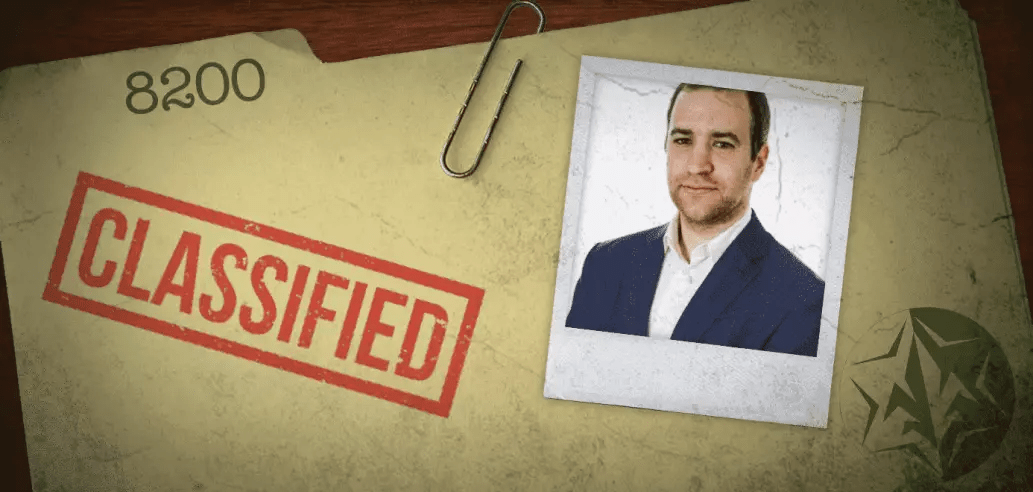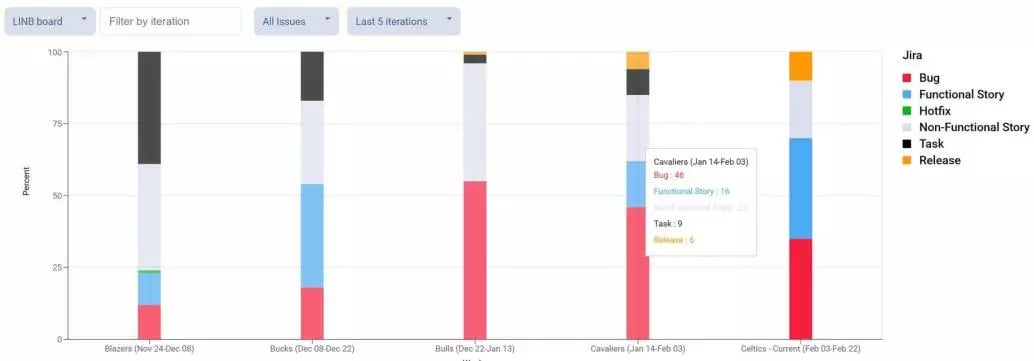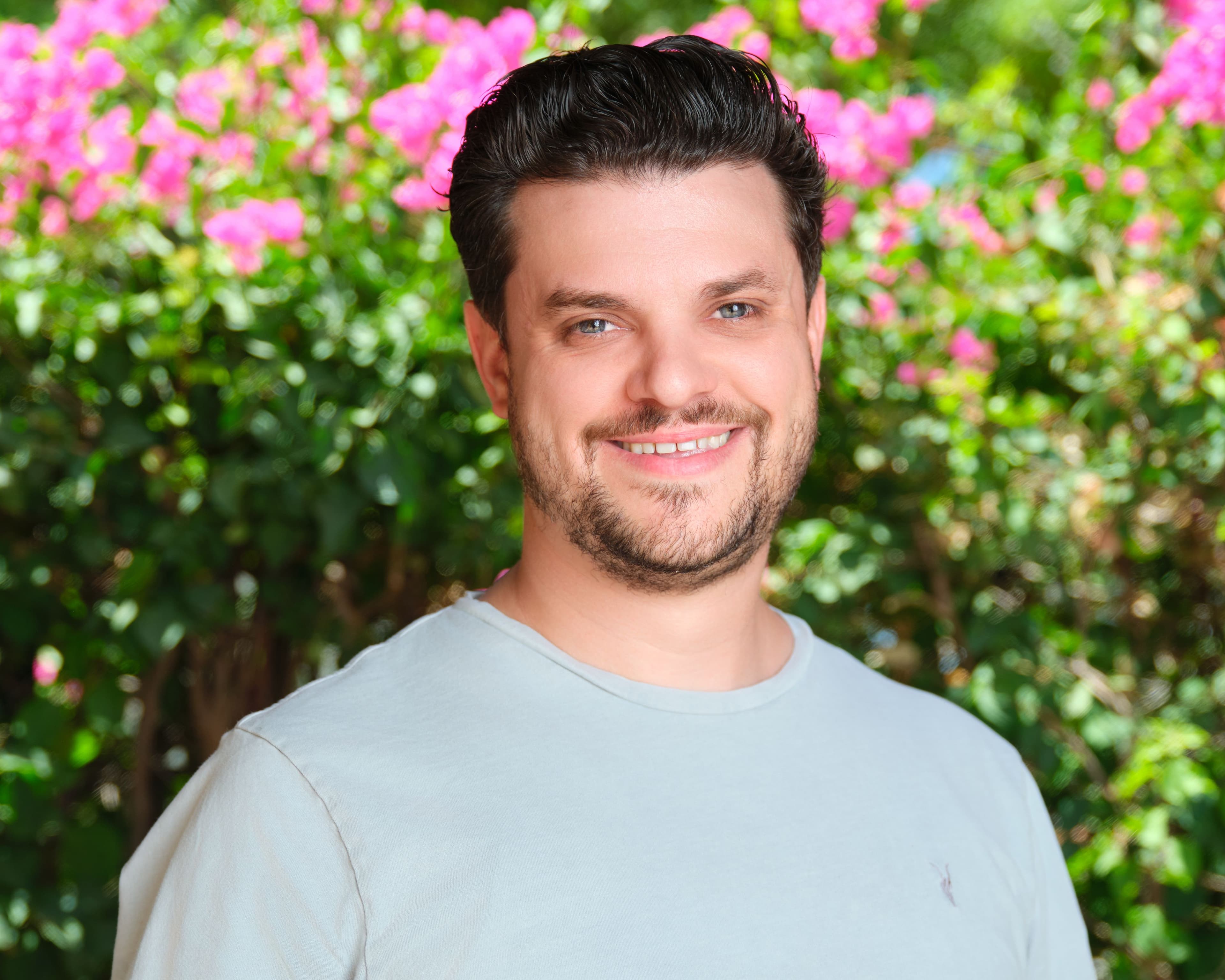Nadav Lev is far from your average VP of R&D
 Nadav, pictured left, with his dev team celebrating an FC Barcelona win in Barcelona on the Axonius company retreat.
Nadav, pictured left, with his dev team celebrating an FC Barcelona win in Barcelona on the Axonius company retreat.
His first “job” writing code was in the elite Israeli military intelligence agency Unit 8200.
Similar in function to the United States NSA, 8200 has been called “the foremost technical intelligence agency in the world.”
Every Israeli serves in the military after high school. Only a select few get into 8200.

I’ve been working with Nadav for about 15 months. I knew right away he was different.
His brain moves fast and his speech is efficient – even when speaking with me in English which is his second language. He’s tough like you would expect from a military man. But also warm. After his team had been using LinearB for a few months, he would ask me “do you want this feedback the Israeli way or the American way?” I’m pretty sure he reserves the “Israeli way” for people he trusts so I chose to take it as a compliment 🙂
His approach to building elite dev teams is different too. He’s not afraid to run his own playbook.
“Elite” software development team defined
Before we get into Nadav’s leadership and team building secrets, it helps to understand how he thinks about elite teams.
Nadav’s top 6 not-so-obvious characteristics of an elite dev team:
- The team exhausts themselves to find the best solution to problems, not just any solution
- “Automation-first” is built into the culture and day-to-day decision making of everything
- Important ideas and steps get documented with a high level of quality and reverence
- Discussions are mostly about the future, sometimes about the present, and rarely about past
- When mistakes are made the first instinct is to create new process (not accuse)
- They align engineering metrics to business goals
His #1 characteristic of a great team: They make other teams around them better.
Nadav played basketball growing up. He talks about great dev teams the way basketball analysts describe great point guards. “Their play and their leadership make everyone around them better.”
 Steph, Kemba, and Dame are three of the best.
Steph, Kemba, and Dame are three of the best.
“It’s also important to look at the elite team through the eyes of the developer.” Nadav said. “Not everyone knows how it feels.” Nadav pointed out some not-so-obvious things that feel differently about being a member of an elite dev team:
- You can be yourself and admit your mistakes freely without fear
- It feels like everyone on the team is smarter than you – in a good way
- Teammates behave the same to each other when the manager is not around
- Teammates are regularly solving problems for you before you know you have one
- Every time CI is not perfectly green, by the time you notice, someone is already fixing it
Journey from top secret to top start-up
| ALERT: Nadav’s story and secrets outline an actionable playbook for the following audiences: ➜ Developers looking for the path to get promoted to team lead ➜ Engineering leaders getting ready to scale up their existing team ➜ Engineering leaders coming in to build a new team from scratch ➜ Dev teams looking to advance from good to great |
Today, Nadav is Vice President of Research & Development for the hot security start-up Axonius.
I was curious about his journey to get there so I asked him about his first project in 8200. He gave me a wry smile and said “classified.” It involved writing code and he was by himself. That’s all he could tell me without killing me 🙂

It must have gone well because after that first project he got to choose what he wanted to work on next and they assigned a second person to help him.
It continued like that for a while. He kept impressing his bosses with cool, top secret tech. They kept assigning more people to help him on his next project.
“I started almost every team I was on but was never the formal leader. I got offers to be a team lead but I refused. I was having too much fun doing cool, hands-on shit.”
Why did he keep moving from project to project? If the project went well, why not stay on to maintain it? “Builders gotta build.” Yes. They surely do 🙂
Nadav stayed with his unit for 6 years – double the required term of 3 years. During that time he met Dean Sysman. Later, when Dean was CTO of a security start-up called Cymmetria, he recruited him to join.
“The final project I started in the army eventually had 50 people working on it. I felt great about what I accomplished and I was ready for a different challenge.” It was time to build something new. He joined Cymmetria as senior developer.
“Early on, I figured out that while we have awesome technologists, probably among the brightest in the world, no one knew how to manage development, release, and write good code. So I took charge.”
Sound familiar? This time when Nadav was offered the role of team lead he took it. “The change was minimal. I was already documenting all of our sprint processes, leading our ceremonies, our testing approach… doing it de facto.”
When I asked if he liked being a lead, his eyes lit up and he got closer to the camera.

He liked it. They raised series A funding and he scaled the dev team from 2 to 10. After three years they had built every feature on their wish list and the company was succeeding. Nadav wanted a new project and decided it was time to move on.
Eventually, he got in touch with Dean Sysman again who was now CEO of a new security start-up called Axonius. Dean didn’t want Nadav to be a dev or team lead. He wanted him to be his VP of R&D.
Things moved even faster this time. In the 24 months after Nadav joined, Axonius exploded:
- The number of people in Axonius grew by 5X
- Nadav scaled the number of people in R&D by 5X
- They won the coveted RSAC most innovative start-up award
- They raised a whopping $95 million dollars from top-tier investors
7 secrets from 8200 for building elite dev teams
Naturally, after hearing this impressive story, I asked Nadav what he learned on the journey. Many of his fundamental beliefs for building and scaling teams trace back to his days in 8200.
 **name redacted**, captain nadav lev, and **name redacted**
**name redacted**, captain nadav lev, and **name redacted**
Secret #1: Learn to lead without a mandate or official title
Leading people without title or authority… Easy to say. Incredibly hard to do.
“I had to learn to get developers to do what I think was right without formal authority over them.”
So how exactly does he do it?
Nadav explains indirect leadership and how it can help you build teams and get promoted.
Secret #2: “If you can’t stand the heat then don’t get into the kitchen.”
Part of leading, especially when you don’t have the title, is putting in the work. “Initially, at Cymmetria, I was doing my job plus creating process documents, writing training guides, building automation, helping everyone… It worked for me in the army so I did it again.”
Isn’t that a lot of hours? I asked. “If you can’t stand the heat then don’t get into the kitchen.”
Ladies and gentlemen, that was Nadav giving it to me the “Israeli way” 🙂
Nadav shares the truth about how much time indirect leadership takes.
Secret #3: The smarter the person, the more “why” matters
According to Nadav “It’s easier to influence average employees. They’re more likely to follow your requests on face value. Your best people are actually harder to manage because they will push back if they don’t understand why you’re asking them to do something.”
Nadav explains how to manage highly intelligent people using “why”
Secret #4: Become great at every job yourself before you hire anyone
“I had a boss in the army tell me ‘if you want to be the best leader you can be, you must know the job of every person you work with, better than that person.”
“I was furious with this because it contradicted every leadership idea I knew of.” I get it. I can think of about eight Harvard Business Review articles I’ve read that might disagree.
But over time Nadav saw the merit in this approach. Remember, your best employees will push back until they know why 🙂
Nadav explains “In order to work with people effectively you have to understand them completely. In order to understand them, you have to understand their job. What are their difficulties? What are they trying to achieve? How are they being measured? How do they perceive you? If you walk a mile in their shoes, you will find that understanding them becomes much easier.”
Now I understand. It’s not about control. It’s about empathy. It also doesn’t mean you have to DO every job better than the people that work for you. You just have to KNOW every job better. Like a coach of a basketball team. They understand what great looks like even if they never played at a high level.
When Nadav started at Axonius, he took this idea to the extreme, and started his tenure there in the most contrarian way I can imagine.
“My plan was to spend my first few weeks meeting everyone, learning, getting comfortable with the people. However, I realized that if I do that, I won’t have the time then to build all the processes and infrastructure we need. So I discarded my initial plan and put my heart and soul into personally building everything our team needed to succeed.”
In two weeks he:
- Wrote 200 pages of code for an end-to-end, automated product testing mechanism
- Integrated coding standard enforcement tools for consistency and shorter reviews.
- Remodeled the Confluence knowledge base to make it easier to find stuff.
- Wrote a guide instructing how to set up a new environment.
- Configured Jira for maximum ease and transparency.
- Wrote a 20 page training program from scratch.
He literally told the CEO “I’m going to start but please don’t put me in charge of the team yet.”
Is that crazy or genius? Nadav argues it was the best thing he could have done.
“I later found out all of those things got me more respect than I could gain with just words. They saw I was one of them and that I could do stuff with my hands.“
Secret #5: Treat your hiring process like a sales funnel
It’s not a secret that great engineers are probably the most important part of building or scaling an elite dev team. Nadav thinks about the hiring process in a unique way.
“You want to look at hiring just like you look at sales. There’s a funnel.”
Prospect for leads: There are inbound and outbound strategies for identifying candidates – no different than how your marketing team thinks about finding leads.
Ideal candidate profile: Filter for your ideal candidates the way sales reps filter for ideal customer profile (ICP).
Qualification: Get candidates who fit ICP on paper on a Zoom to make sure they align to your checklist. Like in your sales team, a different person may handle this call to ensure your hiring managers’ time is being used wisely.
Work the process: Your sales reps put a ton of energy into closing a $100K deal. You should expect to do the same for your candidates.
“Then, whether you win or lose, you have to study your funnel to see where you can optimize.
Not enough leads? Create a referral program, work with recruiting agencies, publish job descriptions on social media.
Exhausted by too many CVs? Write a better job description that is more clear about exactly what you’re looking for. Add automated qualifying questions.
Bringing too many candidates to interviews that are not fit? Refine your phone interview so you will pick and choose better.
Interviews are not helping you find the best candidates? Be more specific. Focus on what’s important. Better to ask one question that you can talk about for 30 minutes than a lot of meaningless riddles that are unrelated to the job. If you are interviewing a frontend developer, let them write frontend code for you. For a DevOps engineer, go and build something together.”
Secret #6: Communicate with data
Now we know that smart people need more convincing and that it helps if you’ve walked a mile in their shoes. Nadav has one more secret about getting buy-in from company executives, smart employees, and teams in general. “You need facts and data.”
“That’s what I like about LinearB. Investment Profile let’s me see if we’re actually investing our time in the areas we think we are.”
 Linearb: investment profile report
Linearb: investment profile report
“And Cycle time makes it easy to see how our delivery efficiency is trending and where we can improve.”
“I even share reports from LinearB in our board meetings. Graphs are easy to understand and make everything more exciting and less boring for the non-technical audience.”
Secret #7: Create training programs for everything
In 8200, every standard operating procedure was documented thoroughly and available in a step-by-step training manual. So when Nadav got to Cymmetria and Axonius, it was natural for him to do the same thing.
“I think this is one of the biggest mistakes software development organizations make. They massively under-invest in training.”
Nadav explains how he builds super detailed training manuals for everything – even internal team culture.
Contrarian leadership approach
Taking the first two weeks of your new job as VP of R&D to write code and documentation… I think about this request Nadav made to his boss when he started at Axonius all the time. Would I be brave enough to ask for something like that? I’m not sure. Honestly, I’m not sure most people would be willing to put in that level of work. But it’s hard to argue with the results.
Even now with a big team at Axonius, he still stays connected to the little details. “I’m a lot busier now but I still do code review. Some might say this is not a good use of my time managing a team of 30. But I believe it is important to stay connected to our developers.”
By the way, Nadav also believes in leading and scaling through delegation. “Hire smart people, give them the tools they need, then get out of their way.” He told me. He frequently recites the famous Steve Jobs quote when working with his management team.

I personally think it’s this mix of seeing the future and being in the weeds that makes Nadav such a special R&D leader.
Builders gotta build
Throughout our conversations I sensed a tension that existed within Nadav. He loves leading teams but he misses building with his own hands. So how does he reconcile the two?
Nadav on why the challenge of leading outweighs his love of coding (right now).
Then I asked him, how do you know when it’s time to move on and build the next team?
“I’m a builder. When there is nothing to build, it’s time to go. At Axonius we have a very special thing going. And we have an opportunity to build something really huge and really valuable to customers. So I’m not going anywhere any time soon.”
BONUS 8th Secret: Automate everything especially testing
Ok… this is not really a secret. Everyone talks about automating everything. But Nadav says his secret is that his teams actually follow through.
“If you’re getting ready to do something manually the second time, stop, and write an automation. Most teams I’ve seen do not stick to this rule.”
Nadav explains how to instill an “automate everything” mindset and culture in your team.
Nadav explains why manual testing is “complete madness” and how to automate every inch of your testing process.





